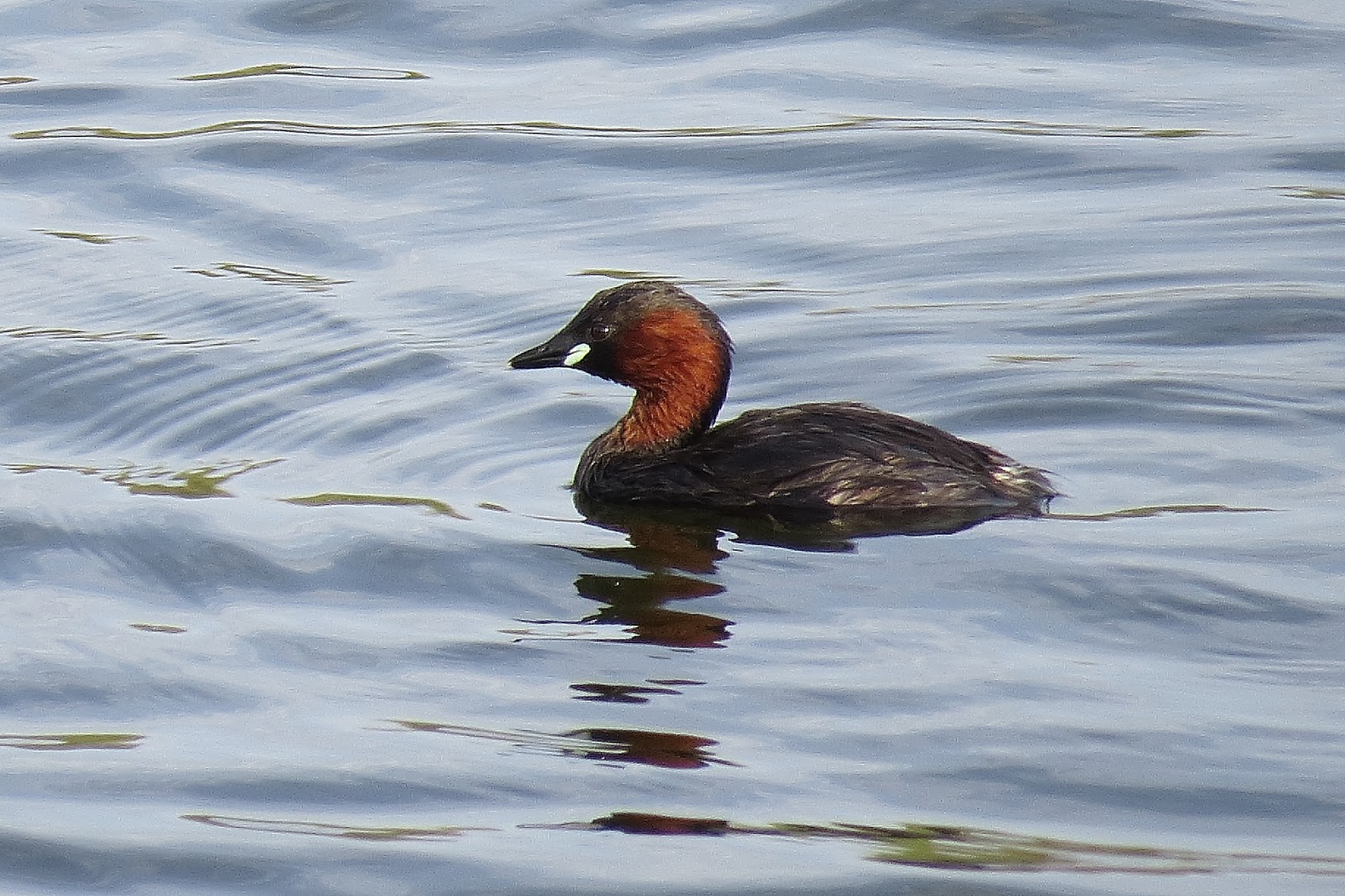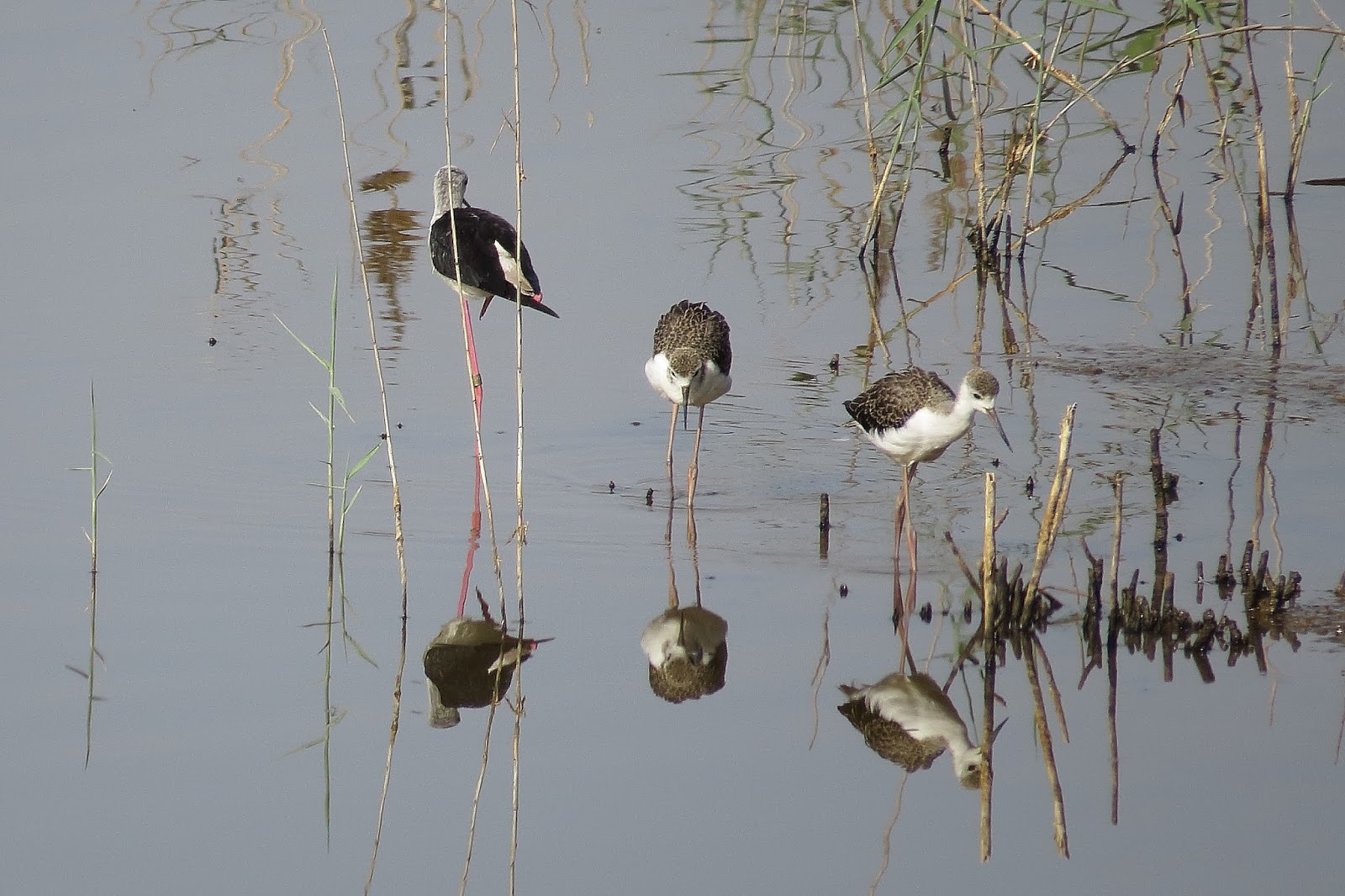Hola a tod@s.
Hi all.
Este blog comprende una visita al Paraje Natural de la Desembocadura del Guadalhorce. Dicha zona consta de unas 70 hectáreas muy cerca de Málaga Capital y un recorrido por tres lagunas que cuenta con un total de 5 observatorios. Aunque su mejor época es durante las migraciones e invierno, en el verano también se pueden ver bastantes especies de aves.
This blog comprises a visit to the Paraje Natural de la Desembocadura del Guadalhorce. This place consists of about 70 hectares close to Malaga Capital and a tour around three lagoons which has a total of 5 observatories. Although the best time for birdwatching is during migration and winter in the summer you can also see many species of birds.
Como de costumbre he elegido una serie de fotos de algunas de las aves vistas, que no todas, así como de otras que he podido observar en una urbanización dentro del término municipal de Elvíria durante mi estancia en esta provincia. Éstas últimas están al final de la entrada.
As usual I've chosen a series of photos of some of the birds I've seen, not all, as well as others that I have observed in a neighborhood within the town of Elviria during my stay in this Province. The latter are at the end of this post.
Llegué al área protegida sobre las 7:30 am. y me fui sobre las 12:30 am. pues el calor empezaba a apretar. El día estuvo soleado y algo fresco por la mañana temprano.
I got to the Protected Area about 7:30 am. and I left around 12:30 am. as the heat began to tighten. The day was sunny and slightly cool in the early morning.
Un cernícalo vulgar (Falco
tinnunculus) estaba posado en los eucaliptos que bordean el río Guadalhorce.
A Common kestrel was perched in the Eucalyptus Trees which border the river Guadalhorce.
Aunque había poca luz me gustó este contraluz del amanecer. En la foto unas gaviotas patiamarillas (Larus
cachinnans) y unas cigüeñuelas comunes (Himantopus
himantopus).
Although there was little light I liked this backlight of the sunrise. In the photo Yellow-legged Gulls and Black-winged Stilts.
Unas garzas reales (Ardea
cinerea) y un grupo de cigüeñuelas comunes (Himantopus himantopus).
Some Gray Herons and a group of Black-winged Stilts.
Gracilla bueyera (Bubulcus
ibis).
Cattle
Egret.
Garceta común (Egretta
garzetta).
Little
Egret.
Abejaruco europeo (Merops
apiaster) joven.
Juvenile of European
Bee-eater.
Adulto de abejaruco europeo (Merops apiaster) en la izquierda de la imagen y joven a su derecha.
Adult of European Bee-eater in the left and a young in its right.
Una hembra de avetorrillo común (Ixobrychus
minutus) entre los carrizos. Solo para los que tengan buena vista. En esos mismos carrizos pude contemplar a dos machos de tejedores amarillos (Euplectes afer) cogiendo pajas para sus nidos aunque muy rápidos y demasiado lejos para la cámara.
A female of Little Bittern among the reeds. Only for those who have good eyesight. In those same reeds I beheld two males of Yellow-crowned Bishops picking straws for their nests although very fast and too far away for the camera.
Gallineta común (Gallinula
chloropus).
Moorhen.
Un precioso zampullín común (Tachybaptus
ruficollis).
A lovely Little Grebe.
Había bastantes galápagos.
There were quite a few Freshwater Turtles.

Macho de malvasía cabeciblanca (Oxyura
leucocephala).
Male of White-headed
Duck.
Una pareja de zampullínes comunes (Tachybaptus ruficollis) me entretuvo durante bastante rato al permitirme ver como alimentaban a sus tres crías con camarones.
A couple of Little Grebes entertained me for quite a while letting me see as they feed with shrimps their three chicks.
También se veían algunos verderones comunes (Carduelis
chloris).
Some Greenfinches were also seen.
Y jilgueros europeos (Carduelis
carduelis).
And Goldfinches.
Macho de avetorrillo común (Ixobrychus minutus).
Little Bittern male.
Que bien se camuflan entre la vegetación.
They camouflage very well among vegetation.
Macho de malvasía cabeciblanca (Oxyura leucocephala).
Male of White-headed Duck.
Macho y hembra.
Male and female.
Esta libélula captó mi atención.
This dragonfly caught my eye.
Un macho de ánade real (Anas
platyrhynchos) con plumaje de eclippse.
A male of Mallard in eclippse plumage.
Solo vi un inmaduro de flamenco común (Phoenicopterus
ruber).
I only watched an immature of Greater Flamingo.
Había muchas cigüeñuelas comunes (Himantopus
himantopus), adultos, jóvenes y crías. Algunas estaban todavía incubando.
There were many Black-winged Stilts, adults, juvenile and chicks. Few of them were still incubating.
Andarrios chico (Actitis
hypoleucos).
Common
Sandpiper.
Chorlitejos chicos (Charadrius
dubius).
Little
Ringed Plovers.
Garceta común (Egretta
garzetta).
Little
Egret.
Gaviotas de Audouin (Larus
audouinii).
Audouin's
Gulls.
Gaviotas de Audouin (Larus audouinii), patiamarillas (Larus
cachinnans), reidoras (Chroicocephalus
ridibundus) y cabecinegras (Larus
melanocephalus).
Gulls of several species: Audouin's, Yellow-legged, Black-headed and Mediterranean.
Focha común (Fulica
atra).
Common
Coot.
Algunas golondrinas comunes (Hirundo
rustica) se posaban en la vegetación.
Some Barn Swallows were perched on vegetation.
Esta fue la única espátula común (Platalea
leucorodia) que vi.
This was the only Eurasian Spoonbill I saw.
Había muchas tórtolas turcas (Streptopelia
decaocto).
There were many Eurasian
Collared Dove.
Gaviota reidora (Chroicocephalus ridibundus).
Black-headed
Gull.
Gaviota patiamarilla (Larus cachinnans).
Yellow-legged
Gull.
Macho de malvasía cabeciblanca (Oxyura leucocephala).
Male of White-headed Duck.
Gallineta de agua (Gallinula chloropus).
Moorhen.
Las fotos siguientes son de la urbanización donde estuve con mis padres y alguno de mis hijos. Aunque la estancia fue corta disfruté un mucho con la flora y fauna del lugar.
The following photos are from the neighborhood where I was with my parents and some of my children. Although the stay was short I enjoyed it very much with the flora and fauna of this area.
Al atardecer el aroma de la dama de noche (Cestrum nocturnum) era maravilloso.
In the evening the scent of Night-scented Jasmine Plant was wonderful.
Había varias parejas y jóvenes de papamoscas gris (Muscicapa
striata).
There were several couples and juveniles os Spotted Flycatchers.
Curruca capirotada macho (Sylvia
atricapilla).
Male of Blackcap.
Tórtola turca (Streptopelia decaocto).
Eurasian Collared Dove.
Joven de mirlo común (Turdus
merula).
Juvenile of Blackbird.
Estornino negro (Sturnus
unicolor).
Spotless
Starling.
Estos frutos de palmera me llamaron la atención.
These palm fruits caught my eye.
Esta águila calzada (Aquila
pennata) sobrevolaba la zona.
This Booted Eagle (Aquila Pennata) was flying over the area.
Pero al cernícalo vulgar (Falco
tinnunculus) que estaba habitando la zona no le gustaba nada su presencia.
But the Common Kestrel that was living in the area did not like its presence.
Un bonita flor del árbol el coral (Erythrina crista-galli).
A pretty flower of the Coral Tree.
Pero de todo lo observado lo que más me gustó fue contemplar este hermoso macho de negrón común (Melanitta nigra) que en pocas ocasiones tengo la suerte de ver.
But of all observed what I liked most was this beautiful male of Common Scoter that rarely I have the chance to see.
Y con esta bonita foto del atardecer en Elvíria me despido de todos vosotros hasta la siguiente entrada.
And with this beautiful sunset photo taken from Elvíria I leave you all to the next post.











































































